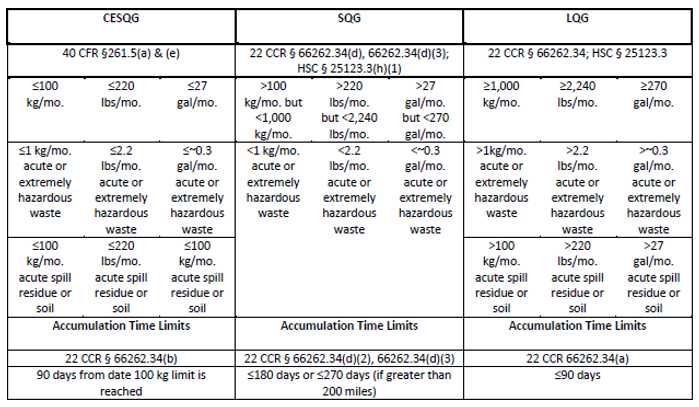HAZARDOUS WASTE GENERATOR
Hazardous wastes may be a liquid, solid or sludge. The wastes may be by-products of manufacturing processes or has been determined by the generator the material is no longer usable. If the waste has any of these four characteristics, it is considered hazardous:
- Ignitability
- Reactivity
- Corrosivity
- Toxicity
These materials or substances include, but are not limited to: spent solvents, paints (oil and latex), used oil, used oil filters, spent acids, corrosives, unwanted or expired products (pesticides, aerosol cans, cleaners, etc.), universal waste, and pharmaceutical waste. If the original material or substance is labeled danger, warning, toxic, caution, poison, flammable, corrosive or reactive, the waste is very likely to be hazardous.
The UPA is charged with overseeing the Hazardous Waste Generator Program. The purpose of this program is to ensure that all hazardous wastes generated by businesses are properly handled, recycled, treated, stored, and/or disposed.
For more information on specific hazardous wastes contact this Division at (661) 862-8740 or the Department of Toxic Substance Control (DTSC).
Hazardous waste generators have different guidelines and storage time frames depending on their status and amount of hazardous waste generated. Conditionally Exempt Small Quantity Generator (CESQG), Small Quantity Generator (SQG), Large Quantity Generator (LQG), Resource Conservation Recovery Act (RCRA) waste generator are the different generator statuses that can be assigned. See the chart below for specific regulations and storage requirements.
Refer to the Hazardous Waste Generator Requirements Fact Sheet for more information.
TIERED TREATMENT
Treatment of hazardous waste after it has been generated to reduce or eliminate the hazardous characteristics is regulated under a Tiered Treatment permit. The three tiers handled by the UPA are Permit by Rule (PBR), Conditional Authorization (CA), and Conditional Exempt (CE), which includes Conditional Exemption Small Quantity Treatment (CESQT) and Conditional Exempt Specified Waste streams (CESW). All other tiers are handled by the DTSC. You can access the DTSC Online Tiered Permitting Flowchart to help determine the correct permit tier for your waste stream and treatment processes.
After determining the correct tier, the appropriate forms are to be submitted to this Division on an annual basis via CERS. These documents are available for download and must be uploaded onto CERS.
- Onsite Hazardous Waste Treatment Notification – Facility Form
- Onsite Hazardous Waste Treatment Notification – Unit Form
- Permit By Rule (PBR) Form
- Conditionally Authorized (CA) Form
- Conditionally Exempt Small Quantity Treatment (CESQT) Form
- Conditionally Exempt Specified Waste Streams (CESW) Form
- Conditionally Exempt Limited (CEL) Form
- Certification of Financial Assurance Form
HOW DO I OBTAIN AN EPA ID NUMBER?
Please follow the instructions located on the DTSC website.
UNIVERSAL WASTE
Universal Wastes are hazardous wastes that are generated by several sectors of society, rather than a single industry or type of business. Universal Waste contains harmful chemicals which, if put in the trash, may cause health and safety concerns to people or the environment. Universal Wastes are more common and pose a lower risk to people and the environment than other hazardous wastes. Federal and state regulations identify Universal Waste and provide simple rules for handling, recycling, and disposing of them. The regulations, called the “Universal Waste Rule,” are in Title 22 of the California Code of Regulations, Division 4.5, Chapter 23. Universal Wastes are managed under the same stringent standards as hazardous wastes and can include:
- Florescent tubes, bulbs & other mercury containing lamps
- Mercury thermostats
- Mercury thermometers
- Batteries
- Non-Empty aerosol cans
- Electronic devices
- Electrical switches and relays
- Pilot light sensors
- Mercury gauges
- Mercury added novelties
For more Universal Waste information visit the DTSC website.
HOUSEHOLD HAZARDOUS WASTE
Leftover household products that contain corrosive, toxic, ignitable, or reactive materials are considered to be household hazardous waste (HHW). These items contain be potentially hazardous and require special care when you dispose of them.
HHW cannot be disposed of by pouring them down the drain, on the ground, into storm sewers, or throwing them out with the trash. The dangers of such disposal methods might not be immediately obvious, but improper disposal of these wastes can pollute the environment and pose a threat to human health. Many communities in the United States offer a variety of options for conveniently and safely managing HHW. No more than 15 gallons or 125 pounds of waste will be accepted at one time. Some products that can be considered HHW are:
|
|
Please visit the Kern County Special Waste Facility’s website for a full list of wastes and more information on CESQGs, Household Hazardous Waste, e-Waste, and Universal Waste.

